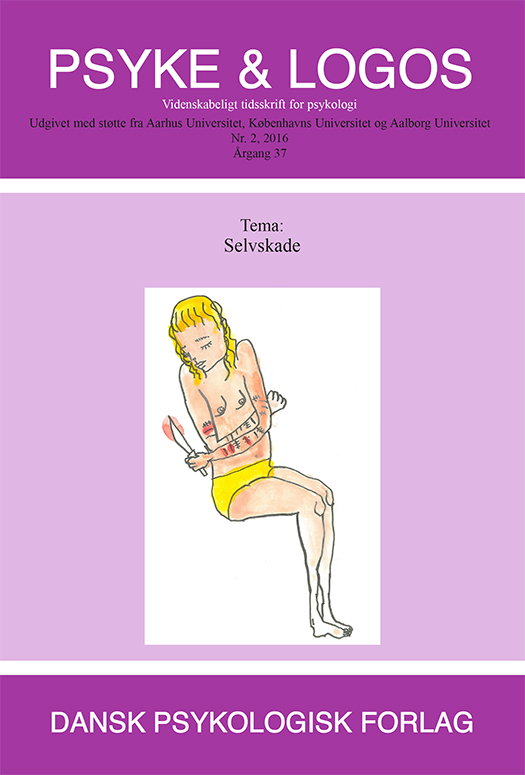Vejen ind og ud af selvskade
DOI:
https://doi.org/10.7146/pl.v37i2.25761Resumé
This paper presents the results of a qualitative study exploring the accounts of 15 people with a history of non-suicidal self-injury (NSSI). The study focusses on the period before engaging in NSSI, life with NSSI and the remission of NSSI. The results show that several factors have significance in relation to the development of NSSI, including dysfunctional childhood homes, social dissatisfaction, stress and major life events. Although some were inspired by the media or friends to engage in NSSI, the first episode is often a spontaneous act that develops into a ritualistic and obsessive behavior. NSSI is often seen as an embarrassing act, and much ambivalence is attached to it. Several participants found motivation to stop the self-injury by proactively choosing life, or because the selfinjury was developing lethal tendencies. Social support has been crucial in relation to stopping the self-injury, either through curiosity and love, or by relatives being the initiator to seek treatment. The results are discussed with regard to previous findings and the paper finishes with recommendations for practice.
Downloads
Publiceret
Citation/Eksport
Nummer
Sektion
Licens
Ophavsret er tidsskriftets og forfatternes. Det er gældende praksis, at artikler publiceret i Psyke & Logos, som efterfølgende oversættes til andet sprog, af forfatteren frit kan publiceres i internationale tidsskrifter, dog således at det ved reference fremgår, at den oversatte artikel har et forlæg i en dansksproget version i Psyke & Logos. Artikler kan frit deles og linkes til på forsknings- og undervisningsnetværk (så som Blackboard). Link foretrækkes, fordi det giver oplysning om brug af tidsskriftets artikler.




